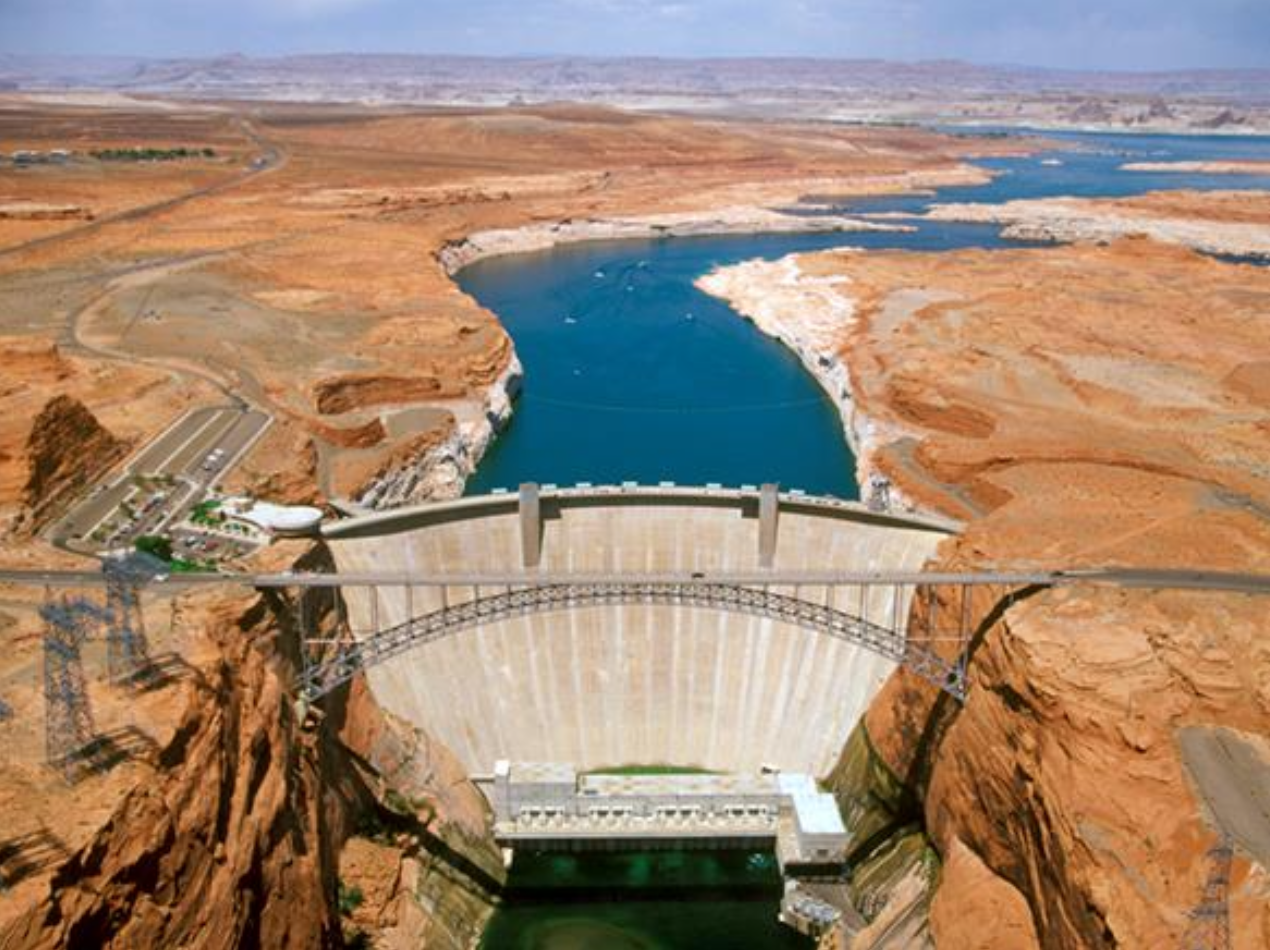Though a symbol of the vastness and ruggedness of the American West, the Grand Canyon has nevertheless been highly modified and tamed by human activities. The greatest transformation of its ecology resulted from the construction of the Glen Canyon Dam in 1963. Built to provide hydropower and water for the arid Southwest, the dam has been controversial since its beginning. Besides the flooding of Glen Canyon upstream, the project caused several major changes to the Colorado River and the Grand Canyon downstream.
Before 1963, a massive flush of water would course down the river in the spring when snow melted, compared to a much lower level in late summer, fall and winter. Now, the operation of the dam alone determines when and how much water flows down the river. While water levels are almost constant from season to season, the amount of water released from the dam can change dramatically from day to day. These changes make a big difference to patterns of erosion and deposition downstream, as well as the quality of the habitat for aquatic species.
At the same time, the water being released from the dam is different than the water that would have flowed through the Grand Canyon historically. It is colder, because it comes from the bottom of the reservoir, and very low in sediment. This is because the particles in the water drop to the bottom when the flow slows after reaching the reservoir. Although cold, clear water might sound appealing to sun-drenched humans looking for a swim, it is very challenging for native aquatic species. These conditions support a different community of algae and invertebrates, and harm native fish species while creating ideal conditions for non-native species like trout.
The combination of the altered flow rate and timing and the lower sediment content mean that the river channel’s constant changes through erosion and deposition are very different today. The complexity of the channel, with its ever-shifting riffles, sandbars and pools is reduced. Sediment now mostly comes from tributaries to the Colorado River, which improves the habitat in some ways. However, the seasonal scouring flows that used to remove sediment periodically are no longer occurring, leading to further changes for species living on the river bottom.
Because these problems are well recognized, efforts have been made to find a solution. Legislation, including the Grand Canyon Protection Act, has helped move the management of the dam toward a greater consideration for the health of the ecosystems downstream. Although the historical flow pattern cannot be brought back without removing the dam, several experiments have been conducted to recreate some of its effects. One change was to limit the daily fluctuations in the level of the river, a measure that has benefited native species and boaters. Another has been the high flow experiments, which seek to mimic high seasonal flows. Positive impacts were seen in the creation of new sandbars, which make good spawning habitat for fish, as well as camping areas for boaters. Further efforts were made to create flow patterns that would reduce the trout population, which threatens native fish species.
Despite this change in management, the flows in the Grand Canyon remain very different from their historical pattern. The high flow experiments are only a fraction of the volume of the spring snowmelt floods, and they last for only very short periods due to their cost and the loss of hydropower generation. The temperature of the water released cannot be controlled, and the amount of sediment coming down the river remains small. The benefits of these efforts are debated, as is the relative threat of invasive species compared to the effects of the dam. Still, looking forward, the high flow experiments will continue. Adjustments will be made based on the observed results, and a comprehensive review will be made in 2027.
The Colorado River flowing through the Grand Canyon is a much-subdued version of the wild, red river that ceased to be in 1963. Yet it is still the home of some unique aquatic species, and there is hope that improving management will help maintain its character and ecology.

